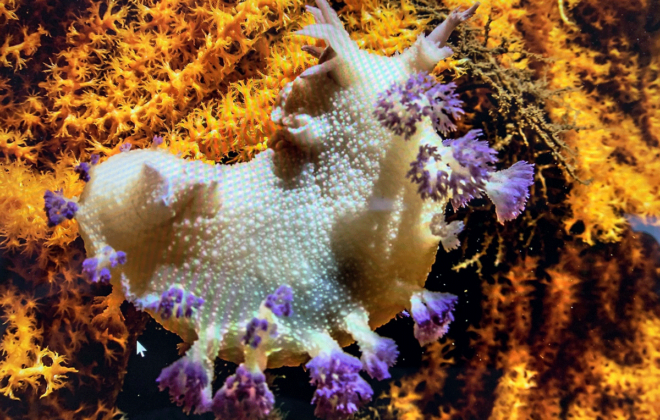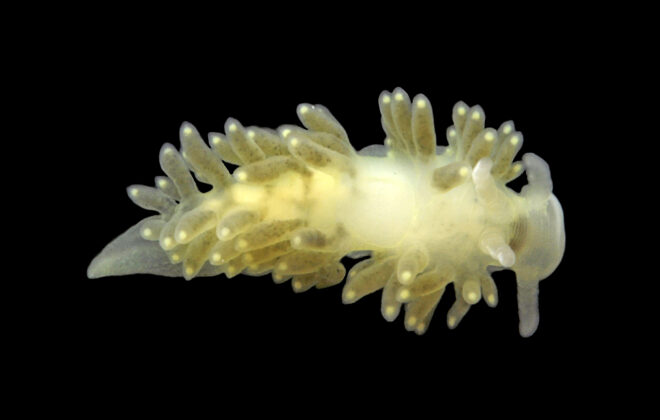Two new Dendronotus species from Norway
We describe two species of Dendronotus as new to science. Again, fruitful collaboration with underwater photographers brings valuable knowledge. Dendronotus keatleyae is a new species from Norway and Northern Ireland. Dendronotus arcticus gartensis from the Trondheimsfjord is a new subspecies with a remarkable similarity to Dendronotus yrjargul, also found in the same area.
Dendronotus arcticus gartensis is described as a subspecies and not a species, because it genetically falls among individuals of Dendronotus arcticus. Characters from external morphology, on the other hand, are very different from D. arcticus, in addition to the substantial geographical distance. Dendronotus a. gartensis has been found just outside the Trondheimsfjord, with the island of Garten in Ørland as the type locality. Hence the name gartensis, meaning «from Garten». Strangely, this species is morphologically very similar to Dendronotus yrjargul, which was described two years ago from the same place. Genetically, however, they are completely separate.

Diving and underwater photography is valuable for increasing knowledge about nudibranchs. We know this from earlier long-term collaboration with divers and underwater photographers. Again, it is Viktor Vasskog Grøtan and Kjetil Breivik Johnson from Ørland Froskemannsklubb (a local dive club) who have collected data and knowledge about these species over time. In April 2022, Alexander Martynov visited Viktor and Kjetil on Ørlandet. They dived, found several specimens and were able to study them alive. Heine Jensen was also involved, and contributed with photography. Heine and Erling Svensen have later found gartensis further into the Trondheimsfjorden, at Skarnsundet.
The new subspecies Dendronotus arcticus gartensis is very similar to D. yrjargul in pigmentation and structure of the gills. Even so, we are able to tell them apart: gartensis can be distinguished from yrjargul by having up to 13 lamellae on the rhinophores, while yrjargul has up to 30 lamellae. The external pigmentation in yrjargul shows two brown parallel lines on the back from head to tail, and the edge of the foot has brown lines. Gartensis has brownish or violet markings on its back (not lines), and lacks lines along the edge of the foot.
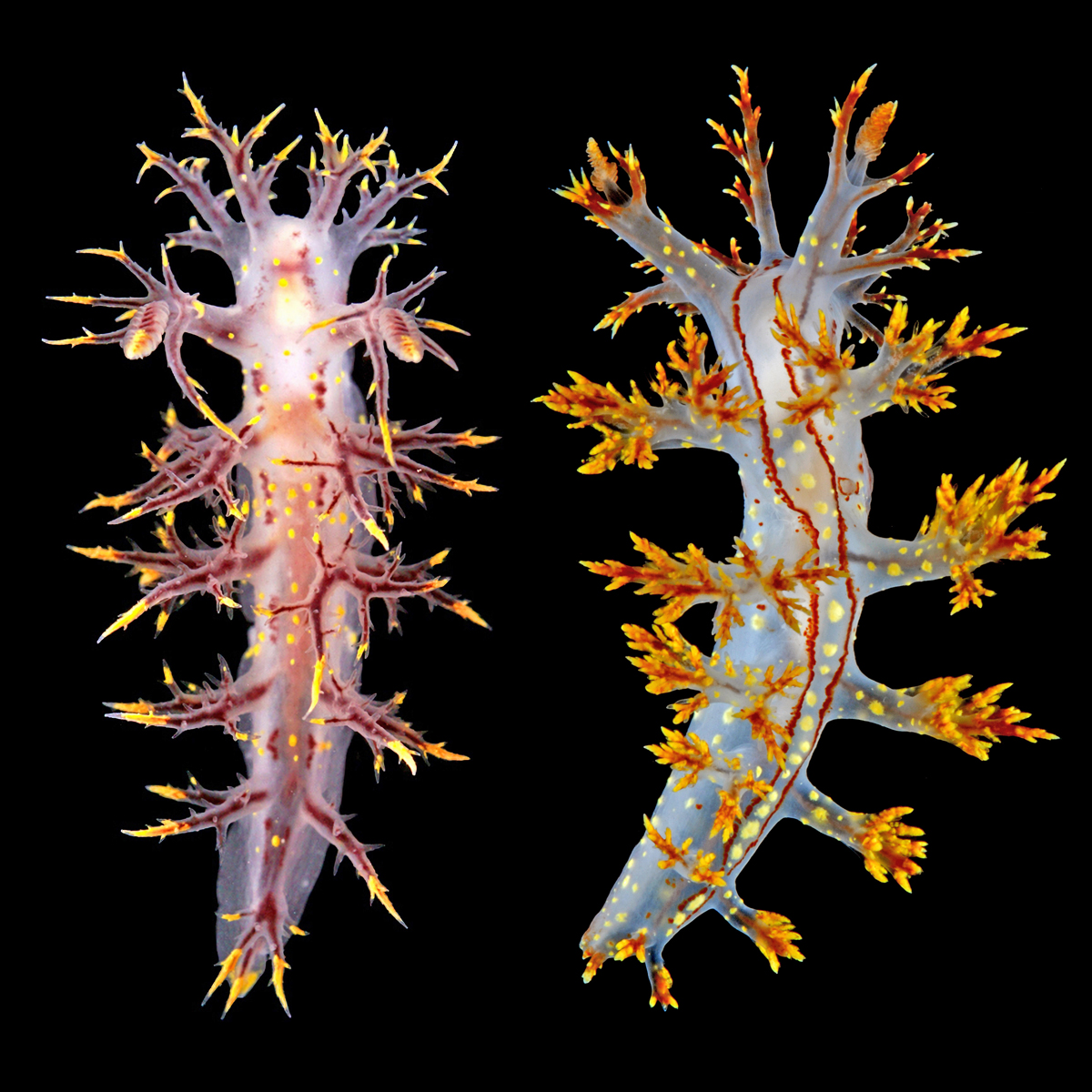
For the record, there are also slight morphological differences between D. arcticus arcticus and D. arcticus gartensis beyond external pigmentation. Dendronotus arcticus arcticus is not found in Norwegian waters, it is only found in the Arctic east of the Barents Sea.
The new species Dendronotus keatleyae was first discovered when it was distinguished from other Dendronotus species using DNA barcoding. Viktor began systemising data on variations in morphology, which was followed up by Kjetil and Viktor. Bernard Picton found the species in Northern Ireland when he was made aware of specimens that differed from other Dendronotus by Seasearch diver Libby Keatley, after whom the species is named.
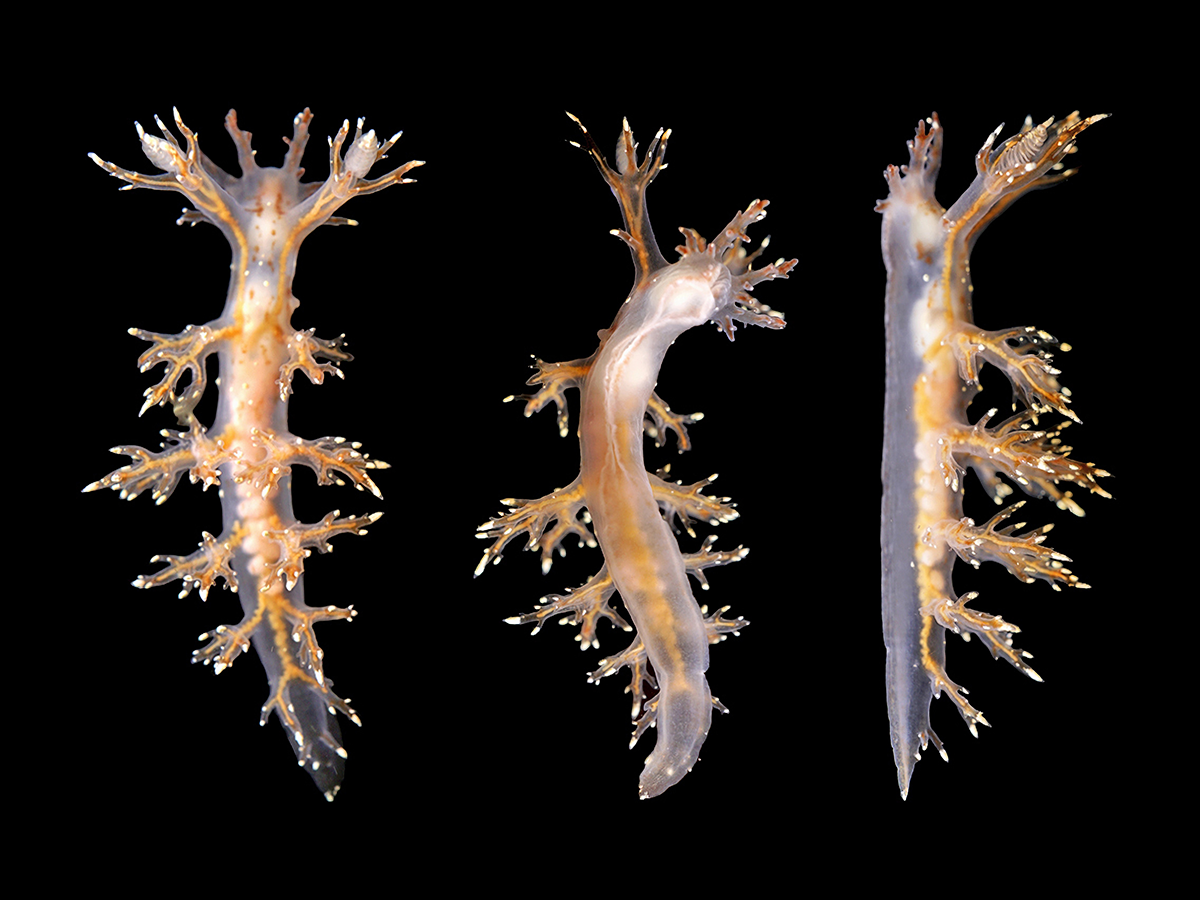
Dendronotus keatleyae may be similar to D. Frondosus, and the two may be found in the same area. In D. keatleyae there are well-marked clear white, partly dull white, tips of the gills along the back, and a few small white or yellowish-white pigment spots on the body. Both lack in D. Frondosus.
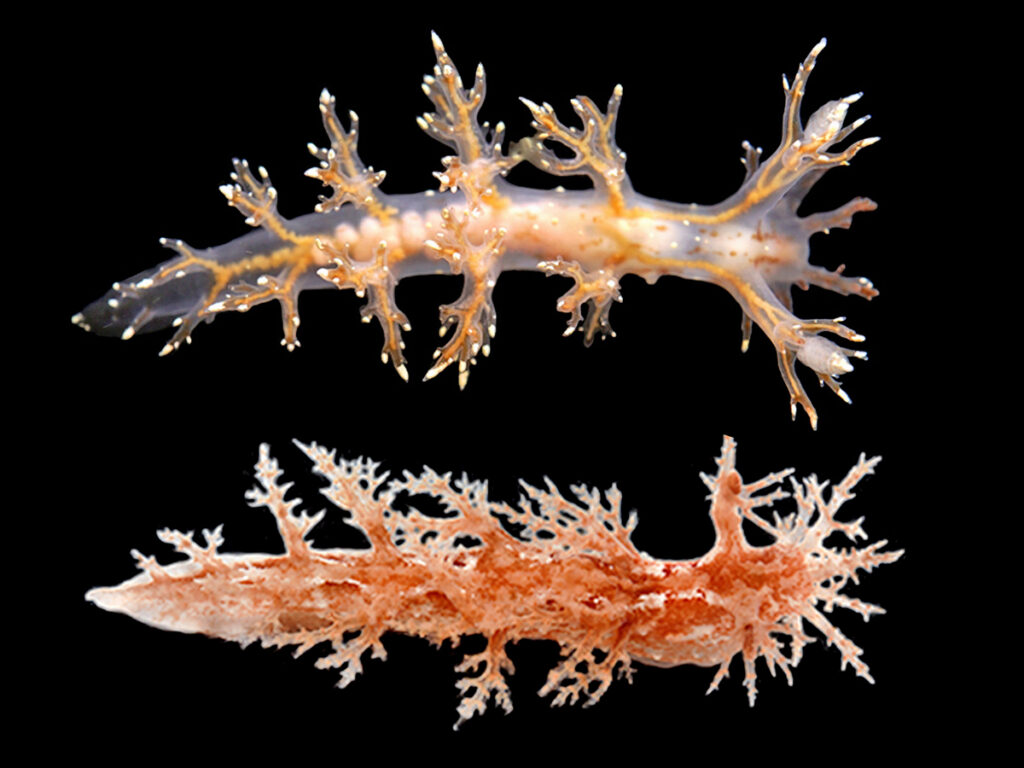
Dendronotus is a genus with several species present in Norwegian waters, and they may be difficult to distinguish from each other. A good description of some of these was made by Jussi Evertsen in a previous blog post. It turns out that the image that was used there and referred to as D. yrjargul is a D. a. gartensis. This tells us that this species has been found for a long time in the Trondheimsfjord. But has it been found elsewhere? We encourage underwater photographers to check their archives and register any discoveries at artsobservasjoner.no with an image.
References
Korshunova T, Grøtan VV, Johnson KB, Bakken T, Picton BE, Martynov A. (2023) Similar ones are not related and vice versa – new Dendronotus taxa (Nudibranchia: Dendronotidae) from the North Atlantic Ocean provide a platform for discussion of global marine biodiversity patterns. Diversity 15(4): 504. https://doi.org/10.3390/d15040504
Korshunova T, Bakken T, Grøtan VV, Johnson KB, Lundin K og Martynov A (2021). A synoptic review of the family Dendronotidae (Mollusca: Nudibranchia): a multilevel organismal diversity approach. Contributions to Zoology 90: 93–153. https://doi.org/10.1163/18759866-BJA10014
[This is translation of a post originally published in Norwegian. Translation by Christian Skauge].
Tags In
Kategorier
- Arrangement (4)
- feltarbeid (35)
- fieldwork (2)
- Gulen (5)
- In English (2)
- Info (6)
- Litteratur (2)
- Nakensnegler i media (4)
- Nye funn (28)
- Presentasjon av arter (42)
- Prosjekter (6)
- Ukategorisert (4)
Siste innlegg
- Populær popup-utstilling om nakensnegler 15. mai 2024
- Tritonia og gjengen – nye navn, igjen 17. april 2024
- Gammelt navn til en nakensnegl ny for Norge 30. august 2023
- Two new Dendronotus species from Norway 5. april 2023
- To nye arter Dendronotus fra Norge 4. april 2023
- Dendronotus frondosus – trillingen som ingen klarer å artsbestemme 29. mars 2023


